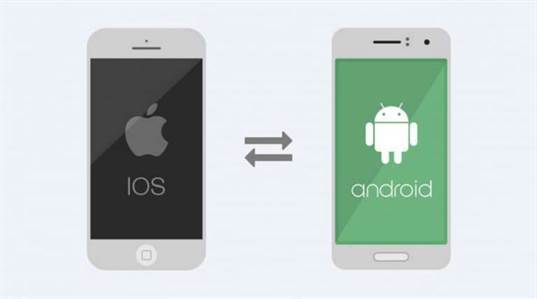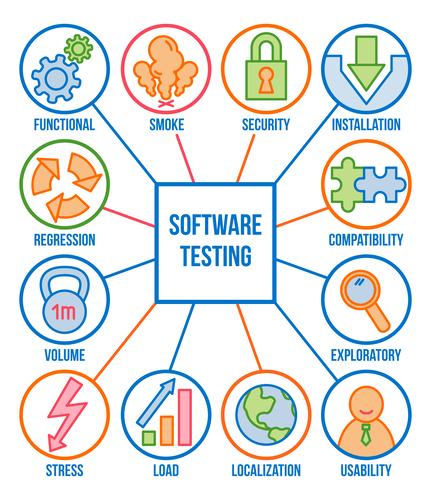It’s price noting that synthetic intelligence is now considered one of the greatest development alternatives for telehealthcare. Deep studying is a transformative drive in telemedicine, providing its unparalleled capacity to investigate advanced information and acknowledge intricate patterns. In this field, DL finds prominent use in medical image evaluation, where Convolutional Neural Networks (CNNs) can swiftly and precisely detect abnormalities in X-rays, MRIs, and histopathological slides. Furthermore, DL extends to Natural Language Processing (NLP), extracting insights from unstructured medical textual Telemedicine Technology for Healthcare Companies content information through fashions like Recurrent Neural Networks and Long Short-Term Memory Networks. These facilitate the interpretation of medical information and clinical notes, contributing to informed decision-making. DL’s predictive analytics functionality, typically using Deep Neural Networks (DNNs), aids in risk assessment and consequence predictions, enhancing the management of continual ailments and reducing hospital readmissions.
In telemedicine, challenges like maintaining affected person confidentiality, ensuring real-time communication, and adapting to evolving healthcare regulations are prevalent. ZBrain presents a solution to those challenges by way of specialized “flows.” These flows act as detailed, step-by-step guides, illustrating how ZBrain systematically addresses industry-specific use instances. Doctors normally spend half of their typical eleven.4-hour workday on clerical and administrative duties [12]. This is comprehensible, considering the excessive volume of sufferers they handle and the significant time dedicated to EHR (Electronic Health Record) documentation duties. This, by chance ultimately impacts the quality of time spent with patients, their major focus.
You Would Possibly Be Unable To Access Abtosoftwarecom
32 . Implementation is at all times the “last-mile” drawback and our focus needs to not be on creating new AI tools or algorithms however rather on creating approaches for embedding AI in society. One-size-fits-all remedy approaches have gotten out of date, replaced by tailor-made, high-quality affected person care. Among other reasons, AI in telemedicine is turning into more widespread because it excels at crafting customized treatment plans based on a user’s distinctive medical journey, genetics, way of life, and other knowledge. Such remedy recommendations are often not only simpler but additionally more aware of the patient’s consolation, leading to fewer side effects.
- Such early detection could improve affected person outcomes through immediate intervention and remedy adjustments.
- These transcripts additionally provide a wealthy source of information for medical AI to use in digital prognosis.
- This contributes to a discount in diagnostic errors and accelerates the supply of outcomes.
- Deep learning is a transformative drive in telemedicine, providing its unparalleled ability to analyze complicated knowledge and recognize intricate patterns.
For an skilled clinician, many clues pointing to a person’s drawback lie within the history. Not solely does it guide the prognosis, nevertheless it also results in a more focussed investigation method. AI can make history taking easier by providing prompts to the process and clues to the analysis, and also asking the proper next set of questions based on the answer saving the clinician time. For instance, an individual suffering long-term with chronic, uninteresting aching ache within the upper abdomen with out interference with sleep is likely affected by gastritis. A summary of such questions being asked in sequence could be delivered as a half of a telehealth utility, and could additionally be implemented efficiently utilizing mobile ICT.
It empowers healthcare suppliers with data-driven insights and decision-making capabilities, enabling them to ship more efficient and personalised care. AI-powered telehealthpushes the boundaries of healthcare delivery by making it straightforward for medical doctors to achieve data-backed insights about patients remotely. Combining AI’s capacity to sift through huge amounts of knowledge with telehealth’s ability to attach docs to sufferers remotely in actual time, AI-powered telehealth might help make one of the best care extra inexpensive, accessible, and efficient.
In such circumstances, the easiest way to invest in AI and telemedicine powered by it might be outsourcing the AI implementation to a tech partner with cheap rates and experience to customise a ready-made AI model as an alternative of constructing one from scratch. Directives come as president announces government order for artificial intelligence development. By understanding the structure of generative AI, enterprises could make informed decisions about which models and techniques to make use of for various use instances. For an in depth understanding of ZBrain’s capabilities, discover this useful resource, listing quite lots of industry-specific flows. It demonstrates the platform’s robustness and flexibility, illustrating how ZBrain can successfully address diverse trade use instances. Let’s have a look at a variety of the possible future trends and improvements in AI for telemedicine.
Key Steps To The Successful Implementation Of Ai In Telemedicine
AI-powered gadgets and apps help healthcare professionals (HCPs) preserve entry to essential affected person knowledge and obtain alerts when anything looks out of the ordinary. As a result, patients and medical workers can interact in additional proactive care, stopping unnecessary hospital visits and ensuring continued well-being. In a study carried out by the University of California, smartwatches were used to collect heart price and step rely information from participants. This knowledge was used to train a deep neural network via heuristic pretraining – a method that approximates representations of the R-R interval, or the time between heartbeats, with out the need for manually labelling the training knowledge. The algorithm was validated towards the gold standard of 12-lead ECG readings from a separate group of sufferers.
The integration of Artificial Intelligence (AI) with telemedicine in today’s quickly evolving healthcare landscape has emerged as a transformative frontier, redefining the way healthcare is delivered. The synergy between know-how and medicine is paving the method in which for a fresh era of affected person care and improved clinical effectivity. AI in telemedicine is reshaping the healthcare industry by bettering accessibility, diagnostic accuracy, and patient outcomes. The adoption of telemedicine, accelerated by the COVID-19 pandemic, has brought healthcare into the digital age.
Well Being Monitoring At House
Artificial intelligence in telehealth can enhance the standard of healthcare providers not like any other. AI and telehealth can provide quick access to healthcare providers for sufferers whereas aiding care suppliers in offering better and quicker care. In telemedicine, AI refers to integrating synthetic intelligence, machine studying, and data analytics into telehealth platforms. Unlike traditional telehealth companies, AI in telemedicine empowers healthcare providers with data-driven insights, predictive capabilities, and personalized therapy options. The use of artificial intelligence in telehealth and healthcare in general is about empowerment, not replacement.
These purposes combine with EHRs, not only enabling docs to access knowledge seamlessly without errors but in addition automating customer help with contextual help. Notably, over a span of 18 months, an clever digital assistant was reported to help a hospital lower doctor order entry errors by about 30%, thereby significantly enhancing the overall medical order process [14]. Tools like automated charting software can streamline data visualization by automatically extracting, organizing, and presenting data from digital well being records, laboratory results, and pharmacy data. This reduces documentation time and allows healthcare professionals to dedicate more time to patient care.
The intersection of telemedicine and AI has the potential to revolutionize healthcare through enhancing diagnostics and triage, enabling efficient distant affected person monitoring, facilitating personalised remedy, and streamlining administrative duties. Moreover, the expertise can make healthcare more accessible by making teleconsultations extra widespread. Living with chronic circumstances such as diabetes, coronary heart illness, and bronchial asthma is a daily challenge, demanding constant monitoring. AI-powered telehealth platforms present sufferers with instruments for self-care, tailor-made suggestions, treatment reminders, and sensible life-style ideas, leading to raised disease administration and long-term well being. Moreover, they typically connect sufferers with healthcare providers when human intervention is necessary. Using telehealth solutions enabled by WebRTC, healthcare providers can instantly work together with their patients in actual time to handle pressing medical points and make knowledgeable medical choices nearly.
This entails utilizing AI algorithms that provide clear explanations for their selections via visualization tools, function importance scores, and determination timber. It’s important to do not overlook that AI, while transformative, is still evolving, and its software in healthcare requires thorough supervision from related consultants. The objective isn’t to replace healthcare professionals but quite to harness the capabilities of AI in complementing their efforts, in the end improving patient care outcomes. While its integration is embraced, ensuring moral issues and privateness can additional take us towards a extra accessible and linked healthcare landscape. Certain key social and moral issues additionally have to be taken under consideration as AI-enabled telehealth turns into extra commonplace.
Healthcare Wearables
Here are a few of the AI use cases in telemedicine that may remodel the healthcare system. This helps healthcare providers to make timely interventions and stop emergency visits. In the case of older people, constant surveillance and immediate diagnosis are all the time required.
AI presents a complete suite of sturdy tools particularly designed for telehealth purposes. AI-powered algorithms excel at scrutinizing medical photographs similar to X-rays, MRIs, and CT scans, significantly elevating the accuracy of figuring out abnormalities, tumors, fractures, and numerous medical situations. In the diagnostic course of, AI goes past human capabilities, generally surpassing human radiologists. Moreover, AI performs a pivotal role in supporting pathologists by meticulously analyzing tissue samples facilitating the precise identification of cancerous cells. This contributes to a discount in diagnostic errors and accelerates the delivery of results. In dermatology, AI showcases its proficiency in identifying pores and skin circumstances and lesions, providing invaluable assistance to dermatologists within the timely detection of pores and skin cancer and other dermatological disorders within telemedicine.
Are you looking for an AI-based telemedicine application that has been particularly developed on your needs? Arkenea is a widely known name within the subject of custom healthcare software program growth, with over a decade of expertise developing medical software program for a diverse variety of purchasers. Research scientists at Brown University are working on a robotic cat powered by synthetic intelligence that can keep the patients company whereas sending out reminders to take their medications. Voice-based virtual assistants are further optimized as nurses and cares for particular patient teams by corporations.
Patients might quickly encounter AI-based programs to detect emotions, which might help clinicians present better psychological and behavioral health companies. Clinicians, corresponding to neurologists and physical therapists, may use AI to measure patient movements to determine neurological and physiological impairments in addition to observe remedy success. Many of the computer technologies and digital instruments used by clinicians and patients have built-in AI capabilities, making AI commonplace in healthcare settings and health-related interactions. AI-driven tools monitor sufferers, each inside medical amenities and outdoors hospital walls.
Real-time transcription additionally boosts accessibility by offering instant captioning that can help these with listening to impairments. The stay nature of AI-powered transcription additionally allows for real-time translation of spoken words, permitting healthcare providers to bridge language gaps with out the want to be taught new languages or use a translator. The educated models are then used to assist specialists diagnose sufferers faster and more precisely via telehealth.
In COPD, AI methods have been applied to the management and surveillance of the condition. Similar approaches could be used as a real-time exacerbation event detector in a selection of chronic situations. AI systems could in the future independently offer diagnoses, not simply support doctors in that process. The healthcare business, technology distributors creating AI-based functions and regulators want sturdy governance applications in place to ensure that clever techniques are — and may remain — correct and reliable.

